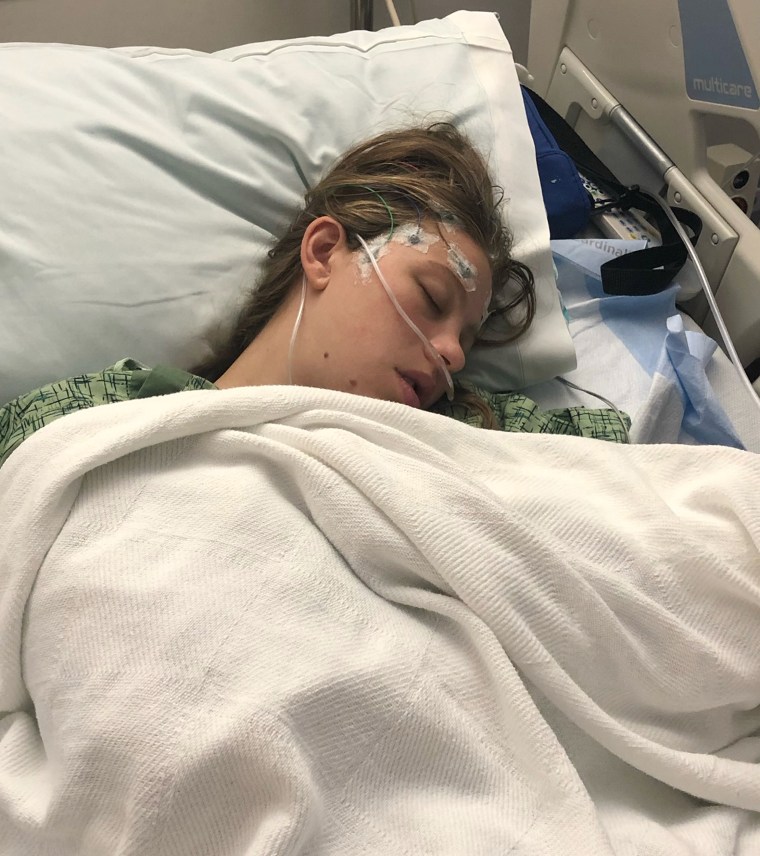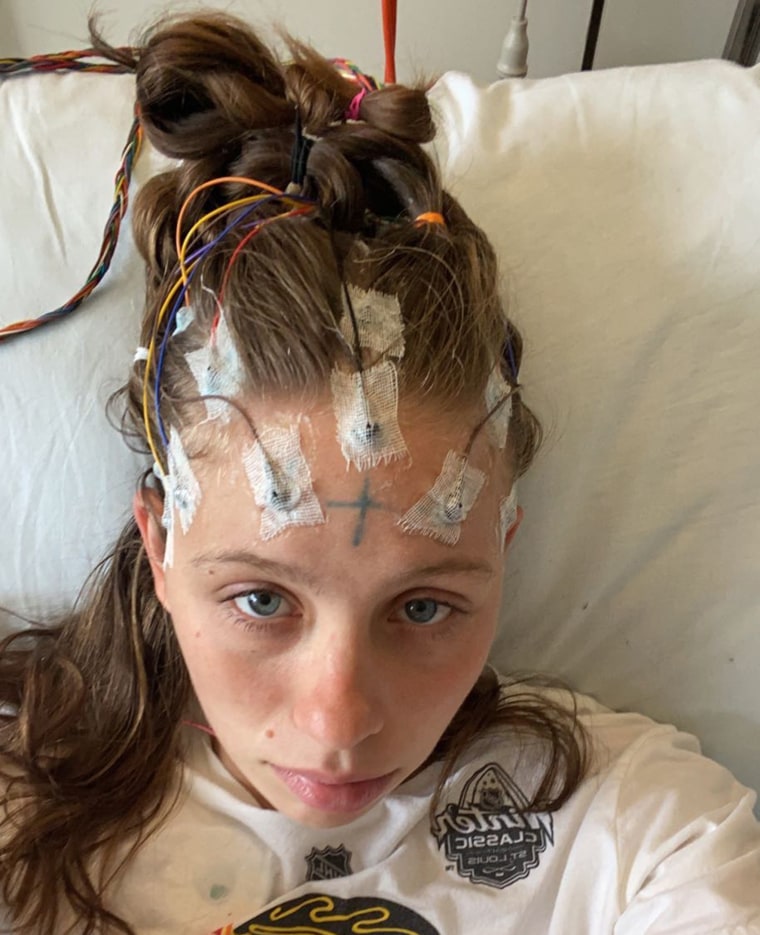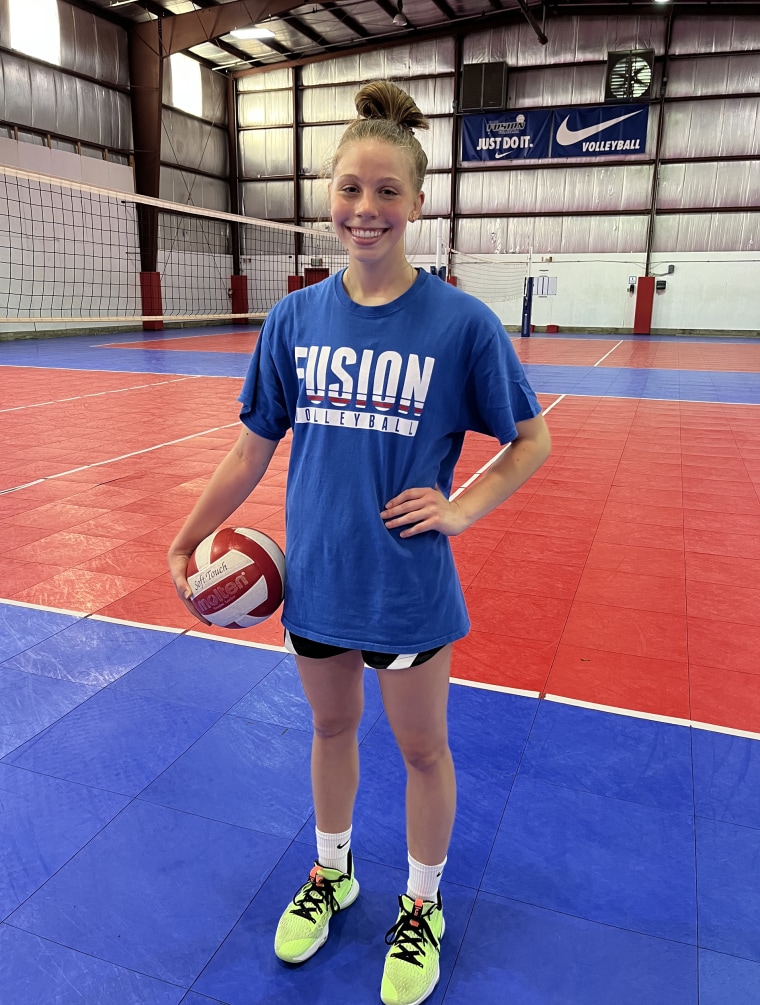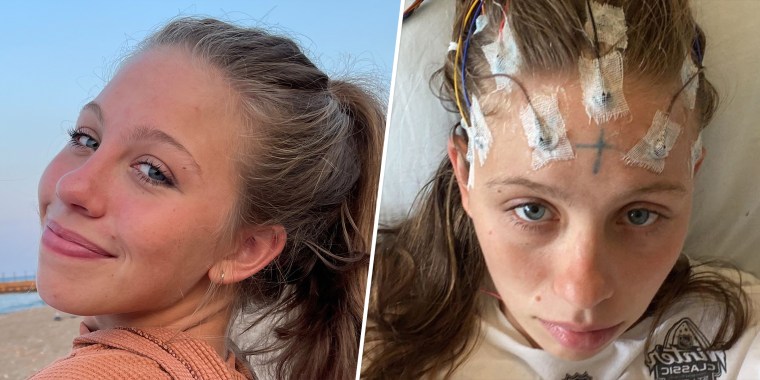Grace Hinchman was a healthy 20-year-old college athlete when she suddenly developed epilepsy — an ordeal that made it difficult for her to talk, walk or know where she was.
Doctors called her case one in a million — or even more unique — for contracting and then completely recovering from a rare but catastrophic sudden epilepsy syndrome. It can strike children and young adults after they develop a fever from the flu or another benign infection.
Just a few weeks ago, Hinchman couldn’t name the day of the week or come up with the word for “pen,” but she’s now back to normal and back in class thanks to aggressive treatment and the ketogenic diet, which are keeping her seizures at bay.
“It’s crazy. It’s hard to wrap my head around and I don’t know if I’ll ever be able to wrap my head around thinking back on it,” Hinchman, who lives in Geneva, Illinois, told TODAY.
She shared her story in a phone interview during which there were no hints of the language problems she experienced just a couple of months prior.

Fewer than 20% of patients who have this condition, known as FIRES (the acronym for febrile infection-related epilepsy syndrome) make a full cognitive recovery, said Dr. Ayush Batra, a neurointensivist at Northwestern Medicine who helped treat Hinchman.
“What’s so disturbing about it is there can be no known prior medical history, nothing developmentally abnormal,” Batra said.
“So you couldn’t think of a more devastating situation where you have these young healthy children (and young adults) and out of nowhere, out of the blue, with no known predilection, they develop this syndrome.”
Seizures wouldn't stop
In early June, Hinchman, a business major and volleyball player at Loyola University Chicago, woke up with an achy neck. She thought she had just slept on her pillow wrong, but as the day went on, she developed an intense headache and started running a fever.
Doctors at her local hospital found nothing wrong, but Hinchman was admitted two days later because of a very low white blood count. The next day, she started having seizures that wouldn’t stop.
She was soon transferred to Northwestern Memorial Hospital in Chicago. When Batra first saw her, Hinchman was still able to interact, but having increasing difficulty with her speech and regressing into childlike behavior, including laughing or crying inappropriately and not being able to do very simple things, like count to 10, he said.
She had visible seizures during which her eyes rolled back, her limbs stiffened and she became unresponsive. Batra also observed speech arrest, another type of seizure where she suddenly stopped talking and wouldn’t understand or express any words. At one point, Hinchman was having seizures almost every hour.
On June 17, she was sedated and intubated to make sure the seizures didn’t disrupt her breathing and to calm down her brain.

What is FIRES?
The very rare condition affects about 1 in a million previously healthy children and young adults, according to the Epilepsy Foundation.
Doctors don’t know exactly why it happens, but it’s believed a low-grade infection that leads to a fever somehow triggers abnormal inflammation, Batra said.
“Something triggers the inflammatory response in the body to go haywire, particularly in the brain, and that creates a cascade or a never ending loop of inflammation,” he noted.
“This escalates to then cause disturbances in the brain where the brain can’t function normally, and when the brain can’t function normally one manifestation of that is seizures.”
In the vast majority of cases, including Hinchman’s, doctors don’t know what specific infection started the process, but almost all of patients have a fever at some point, Batra added. The seizures start 24 hours to two weeks after the initial illness begins, the Epilepsy Foundation noted.
There isn’t a definitive test to confirm FIRES, so doctors make the diagnosis by excluding other possible factors such as a tumor, stroke or an active bacterial or viral infection.
Batra tested Hinchman’s cerebrospinal fluid for cytokines, which are proteins produced by inflammatory cells and a marker of inflammation. He found a very high cytokine response, which signaled FIRES.

Treatment includes the keto diet
Since this was an inflammatory response gone haywire, Hinchman received targeted anti-inflammatory therapy in the form of anakinra, a medication that’s usually used to treat rheumatoid arthritis.
FIRES is such a rare disease that there is no formally approved medication treatment, so the drug was used off-label, Batra said.
It worked. Hinchman was extubated and able to communicate within 48 hours of the injection. She doesn’t remember her seizures or a lot of what happened at the hospital, except that she had a lot of “really weird dreams.”
Her cognitive skills came back slowly. She called a pen “a ring” at first, but she knew the day of the week, the date and where she was.
“I relearned how to walk in the hospital, which was super weird. And building back my endurance for volleyball and working out,” she said. She was discharged on July 2.

Besides continuing to receive two daily injections of anakinra, Hinchman’s treatment includes the low-carbohydrate, high-fat ketogenic diet, which can help control seizures in some people with epilepsy.
It was a struggle at first because Hinchman had to severely limit her intake of fruit, bread and pasta, and figure out what she could eat. Batra acknowledged “it’s not a simple prescription, it’s very challenging.”
But she has not had any seizures since June 17, so “if that’s what it takes for me to not have one again, I am on board. I will do it as long as I have to,” she said.
Hinchman has made a full neurologic recovery by all metrics and measures, “an incredibly rare case,” Batra said. She’s back in college, playing volleyball again and feeling just like she did before the ordeal.
“I’m just so, so thankful for everything that has happened because it could have gone a totally different way,” Hinchman said, expressing her gratitude to her doctors, nurses and family.
“It’s important to remember that each day you get up and you get to do what you want to do is a blessing.”

